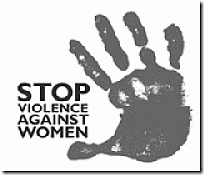Social Media Can Stop Violence against Women and Girls

How do you stop violence against women? By putting women in charge, especially where it matters. We know by evidence that this is true because we have seen results of this experiment in a tiny little country in Africa, Rwanda.
Today, Rwanda has 56 percent of its cabinet seats filled by women. This is the highest proportion of women in a cabinet in the entire world. Violence against women has dropped dramatically in Rwanda, and the society has gained a new sense of respect for the female members. This development is inspiring other countries in Africa, and we see Senegal following suit by enacting a policy that demands women to fill 50 percent of political offices' candidacy.
I am here today to talk about how to use social media to stop violence against women and girls. I am a firm believer that if people understood the underlying essence of social media, they can use it more effectively. Social media is composed of two essential parts, social and media. Social means interaction of the society members, and media is a means of communication with the masses.
Traditionally, media has always been a one way communication stream, whereby an entity comes with a piece of information to share with the population. Examples of traditional media are news papers, radio, and television. Social media turns the communication line to a two-way communication traffic stream. Individuals now have the means to communicate with the masses or provide live feedback to traditional media. Good examples of social media are YouTube, Twitter, My Space, planet blogs, Listservs and other two ways real time communication streaming tools. These platforms allow you to get your ideas out there and find collaboration or feedbacks.
Social media also consist of other parts such as the social networking sites. Famous social Networking sites are Facebook, Linked-in, Meet-up and Google +. Social Media and Social Networking are often used interchangeably and many more are springing up everywhere.
One good way to utilize these tools is to connect with like minded people groups. These are called social groups. Connecting with social groups is very important. Imagine if you are a college student that just got transferred to a new school in another city. You will need new friends in the new territory. Joining similar social interest groups is a good way to meet like minded people. Social mediamhas become even more equivocal spreading out to every aspect of our socio-cultural and socio-economic life. In the economic front, PayPal is another variant of socially empowering tool. PayPal is complementing the traditional banks on financial transaction in an unprecedented way.
At African Views, we understand these tools and have managed to combine the power of social media, such as YouTube, Blogtalk, and social network such as Facebook and Linkedin, with VOIP such as Skype and phones to create a two-ways information stream on a global scale. Our researchers provide most current and well sourced information to deliver a mosaic analysis on development and advancement issues. African Views Radio (AV Radio) is based on the Social Media framework. We have done more than 50 episodes within the last two years on women empowerment, and more than 30 are focused on stopping violence against women and girls. We invite experts regularly to enlighten us on the issues and we encourage audience participation globally. What African Views and our AV Radio Programs are saying is: if you have something to say on the issue, here is the power to say it. The whole world is listening. This is the platform for anyone doing anything meaningful on a small or large scale to improve the communities we live in. Get involve, speak up, and connect!
Wale Idris Ajibade (Wale Idris) is the founder and elected Executive Director of African Views, a nonprofit research and multimedia organization that focuses on improving African and African Diaspora communities and their relationships with the new world through cultural exchanges and collaborative projects.

